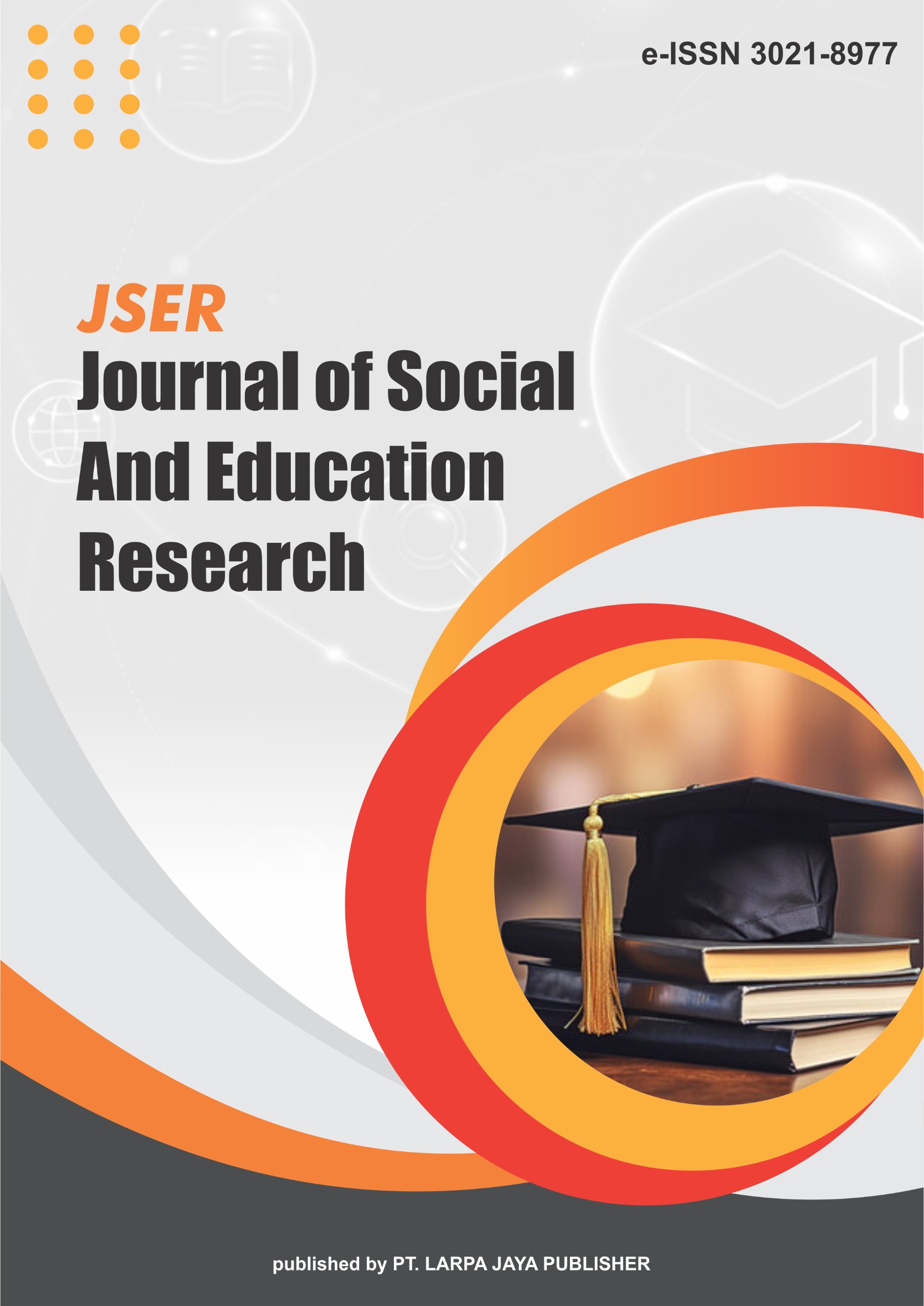Digital Social Network Modeling for Predicting Interaction and Online Community Solidarity
DOI:
https://doi.org/10.63265/jser.v2i1.137Keywords:
digital social network, online interaction, solidarity, community modeling, Society 5.0Abstract
The rapid advancement of digital communication technologies has transformed how individuals interact and build communities online. This study aims to analyze and synthesize previous research on digital social network modeling as a framework for predicting interaction and solidarity within online communities. Using a literature review approach, this research examines studies published between 2012 and 2025 that focus on social network modeling, online interaction analysis, and digital solidarity prediction. The findings reveal that integrating structural data, content, affective factors, and community evolution provides a comprehensive understanding of online social dynamics. Key variables influencing digital solidarity include member engagement, mutual trust, information flow, and the quality of interpersonal relationships. Furthermore, predictive models based on social network analysis (SNA) have proven effective in identifying changes in interaction patterns and assessing the strength of social bonds within digital environments. This study concludes that digital social network modeling serves as an essential tool for strengthening online community management strategies, fostering inclusivity, cohesion, and productivity in the era of Society 5.0.
References
Abufouda, M. (2017). Social network analysis: Link prediction approaches. arXiv. https://arxiv.org/abs/1707.04477
Ancillai, C. (2020). Society 5.0 and the integration of digital technology into social systems. Journal of Digital Society, 5(2), 45–60.
Darmon, M., Hay, J., & Kelly, R. (2014). Community detection using a query-based approach in online social networks. arXiv. https://arxiv.org/abs/1404.0300
Ding, L., Zhang, H., & Wang, Y. (2025). Predicting community evolution in online social networks: Feature-based approaches. PMC Articles. https://www.ncbi.nlm.nih.gov/pmc/articles/PMC12033325/
Ellison, N. B., & Boyd, D. (2013). Sociality through social network sites. The Oxford Handbook of Internet Studies, 151–172.
Han, S., Kim, J., & Park, H. (2023). Affective control and perceived social support in digital communities. PMC Articles. https://www.ncbi.nlm.nih.gov/pmc/articles/PMC10506596/
Han, E., Kim, K. K., & Lee, A. R. (2019). Contributors to exchange structures and their effects on community solidarity in online communities. Internet Research, 29(6), 1410-1442.
Irwanto, I., Santoso, H., & Rahman, F. (2025). Information flow and opinion formation in Indonesian social media networks. MDPI Media, 5(2), 18. https://www.mdpi.com/2673-7051/5/2/18
Lee, J. (2022). Combining spatial and network data to analyze online community dynamics. Journal of Social Computing, 8(1), 22–35.
Pawening, A. (2021). Social network analysis of solidarity among K-Pop fandom communities on Twitter. Journal of Digital Culture, 6(3), 101–118.
Pasquel-López, R. (2022). Exploring EduTubers’ interactions through social network analysis. Frontiers in Education, 7, 845647. https://www.frontiersin.org/journals/education/articles/10.3389/feduc.2022.845647/full
Robins, G. (2013). An introduction to exponential random graph (p) models for social networks*. SAGE Publications.
Ruan, W., Zhang, J., & Chen, Y. (2012). Community detection in social networks with node attributes. arXiv. https://arxiv.org/abs/1212.0146
Sun, Y. (2020). How conversational ties are formed in an online community: a social network analysis of a tweet chat group. Information, Communication & Society, 23(10), 1463-1480.
Wasserman, S., & Faust, K. (2013). Social network analysis: Methods and applications (Structural Analysis in the Social Sciences, Vol. 8). Cambridge University Press.
Downloads
Published
How to Cite
Issue
Section
License
Copyright (c) 2024 Journal of Social And Education Research

This work is licensed under a Creative Commons Attribution-NonCommercial 4.0 International License.










